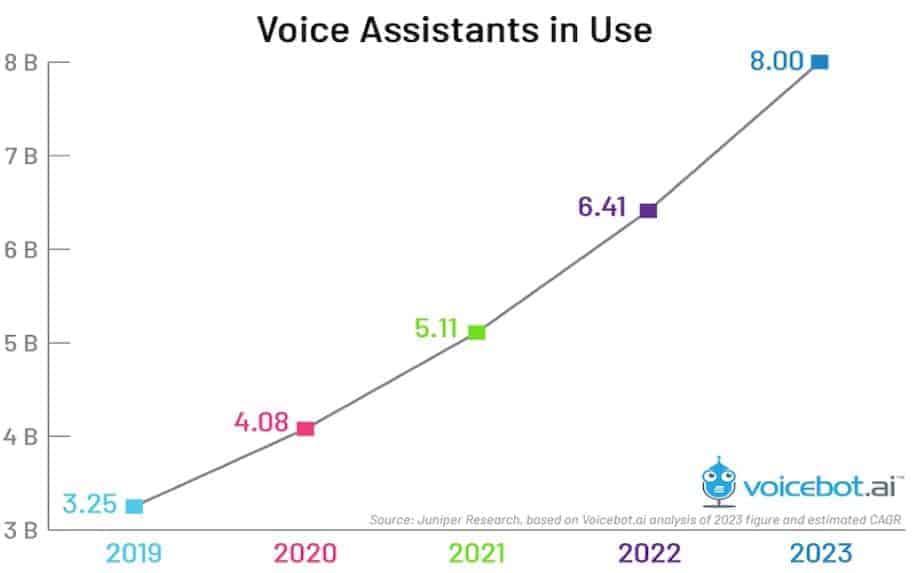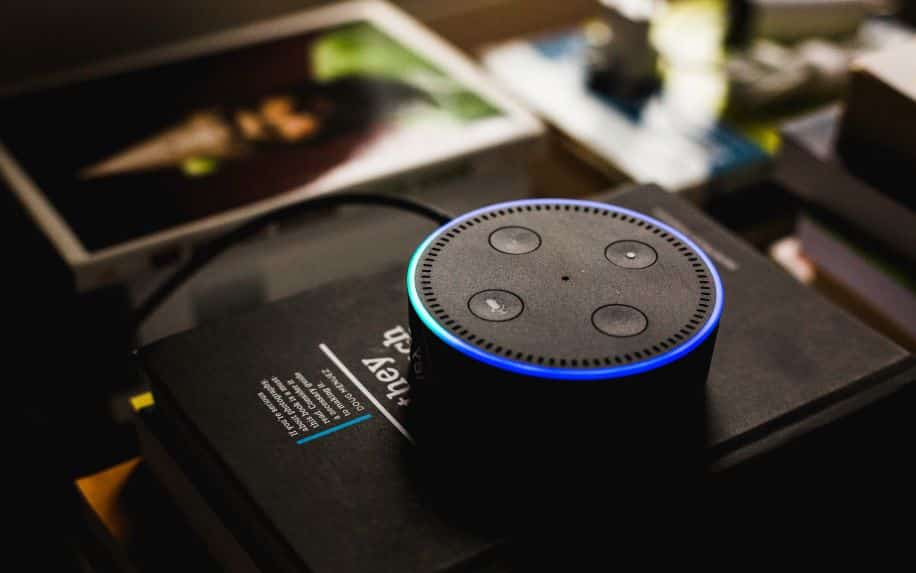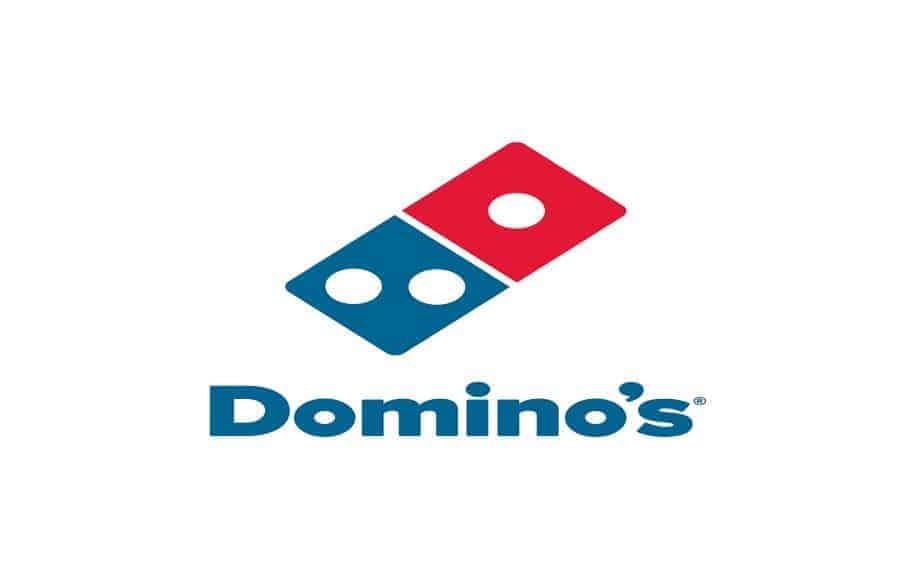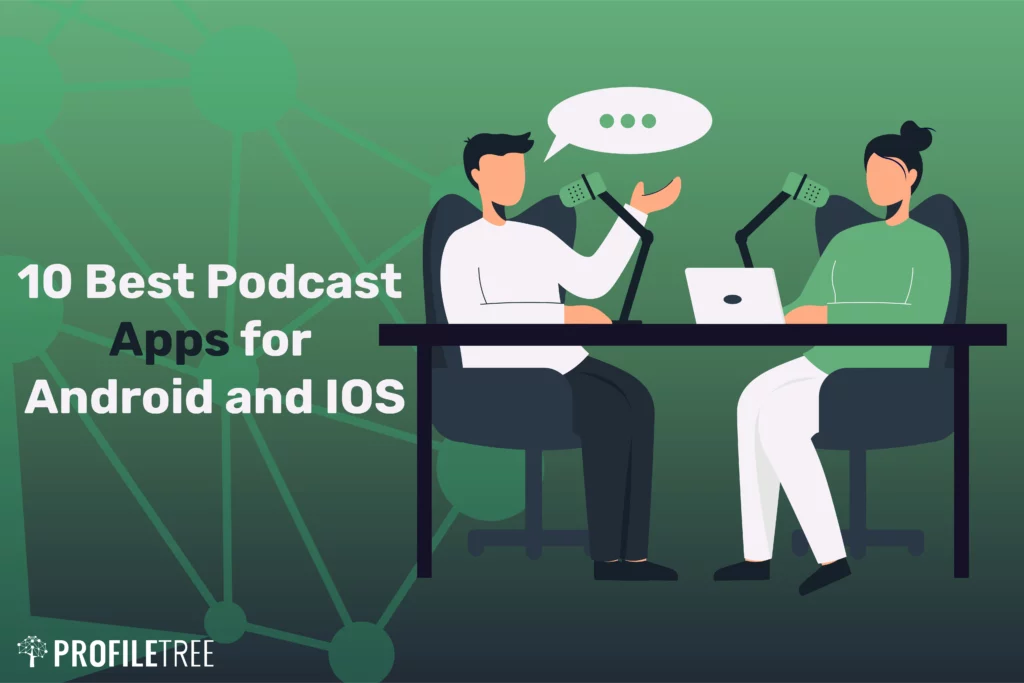Voice Marketing The Latest Marketing Trend: As technology advances, marketing trends and capabilities are changing rapidly. And while the means may differ, voice marketing still has the same goal as all other forms of content marketing. That is, to reach consumers, solve problems and questions, and keep them involved with the brand.
Since voice marketing is one of the hottest current trends, we’re explaining the basics you need to know before taking the deep dive into the new strategies and platforms.
What is Voice Marketing?
Voice marketing is a new up and coming marketing trend. It involves strategies that are designed to help businesses reach audiences using voice devices.
As voice-controlled devices, such as Google Home and Amazon Alexa, are becoming more and more popular, voice marketing aims to take advantage of this trend to promote brand awareness, products, and more.
Similarly, with the recent rise of podcasts and Clubhouse, brands and influencers alike are using more audio and voice content to connect with their audience.

Table of Contents
How Voice Marketing Changes the Game
Let’s take a look at a few examples of how voice marketing is changing the way consumers interact with brands.
Imagine you are in the kitchen trying to cook up a new recipe you heard about. Before, you would have to stop cooking, clean off your hands, and either pull out an old cookbook or type on your phone into Google. Now, you can ask your Smart Speakers for the recipe, using only your voice.
What about in the car? Voice marketing is helping to make driving safer by being a completely hands-free search tool. Users can simply ask a question in order to learn where the closest shops, petrol stations, or restaurants are.
Through voice marketing, searching for information has never been more simple. No more having to stop driving, cooking or whatever you’re doing. We can now search for anything effortlessly by just speaking.

What Does This Mean for Your Business?
Voice marketing gives you the opportunity to reach potential customers in areas you’ve never been able to before.
A question while cooking dinner can lead a customer to a recipe on your restaurant’s website. A voice search from the car could be an opportunity to give a customer a coupon for your shop. With voice marketing, there is a whole new world of opportunities for you to explore.
The best place to start when considering a voice marketing campaign is to ask yourself a few questions:
- What can you offer to consumers that they cannot get from any other brand?
- What questions might customers ask about your business, products, or services?
- How can you get this information out quickly and simply?
The Big 3 Voice Marketing Trends
Voice marketing has taken shape in three primary forms:
- Podcasts,
- Clubhouse,
- Smart speakers
These all have their pros and cons, so make sure you know the difference before deciding which one will work best for your business.

Podcasts
Podcasts are typically audio recordings that include a host or co-hosts and featured guests. Podcasts can be focused on a specific topic, such as an important news story or new movie in the cinema, or they can be free-flowing and without a specific topic.
Podcasts are available on streaming platforms such as iTunes and Spotify, but can also be hosted on a business’ website directly. Since the podcast boom, many people listen to podcasts while commuting to and from work, during household chores, and while working out.
Different podcasts are available for almost every topic imaginable, from true crime to makeup to business and marketing trends. Podcasts are a great way to promote brand awareness and bring content to your consumers.
Clubhouse
Clubhouse is an invite-only social media application that features virtual rooms which users can join. These rooms function almost as conference calls, where users can have conversations and speak with each other – audio only.
Well-known influencers such as Mark Zuckerberg, Elon Musk, and even Kanye West have joined the conversation on Clubhouse and are largely responsible for the app’s growth and success.
For those who are on the app, the small chat rooms with limited allowed users makes the experience feel engaging and important. This format allows users to have discussions with only people who are important and knowledgeable in the subject matter.
Smart Speakers
Smart speakers are just what they sound like: speakers.
The difference between these and your average speaker is that smart speakers come with a built-in AI virtual assistant. This allows users to use voice commands to perform tasks, such as set timers, search the internet, and of course, play music.
The virtual assistants also have the capability to answer user questions and control other devices, such as compatible light bulbs, video doorbells, and door locks.
From a marketing perspective, smart speakers can be used to promote your brand and reach new customers. When a client asks a question, the speaker will read out an answer from the internet. In order to begin promoting your business via an Amazon Alexa or Google Home device, you will need to create a Skill Kit, similar to a mobile application.
Examples of Voice Marketing from Big Brands
Now that you know the basics of voice marketing and its forms, let’s take a look at how some big brands are taking advantage of this new trend:
Burger King
Burger King took on the growing trend of voice marketing by creating a hilarious, mildly annoying ad that triggered viewers’ Google Home devices.
Towards the end of the 15-second advertisement, an actor leaned towards the camera and said “OK Google, what is the Whopper Burger?” which prompted the AI speaker to read off the Wikipedia page for the Whopper.
This was the first time that a brand used an ad to purposely prompt viewer’s smart speakers, and while some may see it as genius, it also annoyed some viewers as their speakers went off every time the ad played on their TV.

Starbucks
Starbucks uses voice marketing to allow users to reorder their favourite coffee from one of the last 10 stores they’ve ordered from via their Amazon Alexa skill kit. Consumers can also check their Starbucks Card balance simply by asking their Alexa how much money they have on it.
Domino’s
Domino’s has also jumped on this new trend. By speaking to your Amazon Alexa, you can build a new order, reorder your previous order, and check your order’s status. Similar to Starbucks, this cuts out the middleman and allows customers to place orders without picking up the phone or driving to the store.
TED Talks
TED Talks are inspiring, persuasive, and sometimes funny videos from expert speakers on topics ranging from social issues to technology to business. Through the Amazon Alexa, users can ask the smart speaker to play a random TED Talk, the latest TED Talk, or to search the talks by topic or speaker.
McDonald’s
Did someone say Szechuan Sauce?
Fans demanded a return of the sauce after a popular adult cartoon show referenced it, but McDonald’s severely underestimated how large the demand would be. This caused chaos as thousands of customers were left sauceless, and thus, The Sauce podcast was born.
In this 3 part investigative podcast, McDonald’s dives deeper into the incident and offers an apology to all customers who couldn’t get a packet of the sauce.

eBay
eBay’s podcast, Open for Business, features interviews with entrepreneurs who have taken a business idea and turned it into a successful company. The podcast is told in a journalistic style and gives valuable insight into how an idea can grow into a full-fledged brand.
Open for Business relates back to eBay’s journey as a startup business in the 1990’s and aims to inspire future entrepreneurs and business owners around the world.

Microsoft
Microsoft’s .future podcast is all about how our choices today will impact how the future unfolds.
Some of the main topics of this podcast include gaming, data, technology, and health. Microsoft has been focused on the future since its beginning, making this podcast a great way to explore the brand and what it stands for.

Slack
Slack is a popular messaging app for business that helps to connect people to their coworkers and the information they need. The main goal of Slack is to help each business work better together.
Slack uses voice marketing by hosting a podcast, Slack Variety Pack, and telling stories about the teams that make up successful businesses. This podcast is great because it directly correlates to Slack’s brand identity and purpose.
The Downside of Voice Marketing
While voice marketing is becoming a revolutionary game changer, it is not without its faults. Voice marketing is so different from traditional and web marketing that brands will have to change their tactics to fit this new trend.
Most on-screen marketing relies on the use of logos, images, and other graphic elements that help consumers recognise your brand. With voice marketing, all of this disappears.
This means that you will have to market your brand completely verbally, without any assistance from memorable colour schemes, images, or your logo.
Another downside of voice marketing is that there is no tangible engagement with the brand. Since the audience is getting their information completely through voice, they will not be clicking through your website or engaging with your social media.
Without the consumers clicking through your pages, it may be hard to track engagement and reach.

Find Your Brand’s Voice
Voice marketing has become a revolutionary marketing tool for many businesses. From podcasts to new apps like Clubhouse to using smart speakers, brands are reaching out to audiences they’ve never tapped into before.
Even though some trends fade, it seems voice is here to stay, so make sure your brand’s voice is heard by developing unique voice marketing strategies that work for you.
Emerging Voice Technologies: Revolutionizing the Way We Interact
The world of voice technology is on a rapid evolution, pushing the boundaries of communication and interaction. Beyond the familiar smart speakers and voice assistants, several exciting technologies are emerging with the potential to transform how we use our voices:
1. Real-Time Translation:
- Breaking Down Language Barriers: Imagine seamless, on-the-fly translation during conversations, allowing for real-time communication across languages. AI-powered translation engines are becoming increasingly sophisticated, handling nuance and context to deliver accurate and natural-sounding translations.
- Applications: This technology opens doors for global collaborations, travel experiences, and accessibility for non-native speakers. Imagine attending a conference in another language or receiving voice-guided directions while exploring a foreign city, all without language barriers.
2. Sentiment Analysis AI:
- Understanding the Voice Behind the Words: Beyond the raw information, voice AI can now analyze the emotions and sentiment behind what we say. This includes detecting speaker intention, identifying sarcasm, and gauging overall satisfaction or frustration.
- Applications: Sentiment analysis has valuable applications in customer service, where AI can analyze calls to detect potential issues and personalize responses. It can also be used in market research, analyzing feedback and opinions for deeper insights.
3. Predictive Suggestions:
- Thinking Ahead with Voice: Imagine your voice assistant anticipating your needs, proactively suggesting actions, and completing tasks before you even ask. This is the promise of predictive AI, analyzing contextual cues and user behavior to offer relevant suggestions.
- Applications: Imagine your smart speaker suggesting recipes based on the ingredients you have, automatically setting your thermostat upon entering your home, or pre-filling forms based on your previous interactions. This seamless, predictive voice interaction holds enormous potential for convenience and efficiency.
Beyond these exciting areas, other emerging voice technologies include:
- Speaker Identification and Voice Biometrics: Recognizing and verifying individuals based on their unique voice patterns.
- Multimodal Interaction: Combining voice with other modalities like gestures and facial expressions for a richer and more natural interaction.
- Affective Computing: Understanding and responding to the emotional state of the user through their voice patterns.
These advancements point towards a future where voice interaction becomes even more intuitive, seamless, and personalized. They have the potential to revolutionize various industries, from healthcare and education to entertainment and customer service.
Inspiring Examples: Unleashing the Potential of Voice Marketing across Industries
Voice marketing’s potential goes beyond simple interactions. Here are some real-world examples showcasing its prowess in diverse industries:
1. Engaging Customers:
- Domino’s Pizza: Streamlined pizza ordering through smart speakers. With “Hey Google, order me a Domino’s pizza,” customers can effortlessly customize and place orders hands-free. This voice-powered convenience boosted ordering frequency, particularly among younger demographics.
- Capital One: Personalized financial insights. Imagine asking your smart speaker how your spending is going or checking your account balance. Capital One’s voice app enables such interactions, fostering customer engagement and financial awareness.
2. Boosting Brand Awareness:
- Skittles: Playful voice games. Skittles leveraged Google Assistant’s storytelling capabilities to create interactive voice games. These engaging experiences drove brand awareness and positive associations with the playful candy brand.
- Headspace: Guided meditation snippets. The popular meditation app partnered with smart speakers to offer short, guided meditation sessions accessible through voice commands. This strategic move introduced potential users to Headspace’s value proposition and expanded its reach.
3. Enriching Customer Experiences:
- Hilton Hotels: Voice-activated room controls. Imagine adjusting the room temperature, dimming the lights, or ordering room service just by talking. Hilton’s voice-enabled smart rooms offer guests this level of control and convenience, enhancing the hotel experience and driving guest satisfaction.
- L’Oréal: Personalized beauty consultations. L’Oréal’s voice-powered app guides users through hair and skincare routines, offering personalized recommendations based on their preferences and needs. This interactive approach not only improves customer engagement but also increases sales of relevant products.
4. Driving Local Business Growth:
- Starbucks: Streamlined mobile ordering and payments. Starbucks allows customers to order and pay for their coffee through voice assistants. This voice-powered convenience promotes mobile ordering, reduces queue times, and ultimately boosts efficiency and customer satisfaction.
- Domino’s Local Deals: Location-based voice offers. Imagine your smart speaker suggesting a pizza deal based on your location. Domino’s implemented voice triggers to offer nearby deals through smart speakers, driving foot traffic to specific stores and promoting targeted local marketing.
Actionable Tips and Resources to Get You Started
The world of voice is calling, and your business can answer! Here are actionable tips and resources to guide you through your voice marketing journey:
1. Define Your Goals and Audience:
- Identify your objectives: Do you want to boost brand awareness, drive sales, improve customer experience, or offer specific information?
- Understand your audience: Who are you trying to reach with your voice experience? What are their needs and preferences?
2. Choose the Right Platform:
- Smart speakers and voice assistants: Amazon Alexa, Google Assistant, Apple Siri, Samsung Bixby – consider which platforms your target audience uses most.
- Voice apps and skills: Develop custom voice apps for specific platforms to offer unique functionalities and deeper engagement.
3. Craft Engaging Voice Content:
- Focus on natural language: Speak like a human, not a robot. Use conversational tone and avoid overly technical jargon.
- Prioritize clarity and conciseness: Keep your instructions and information clear and to the point. Remember, users’ attention spans are shorter in voice interactions.
- Optimize for search: Research long-tail keywords and natural language queries users might ask to find your voice content.
4. Tools and Resources:
- Amazon Alexa Developer Portal: https://developer.amazon.com/
- Google Assistant Actions Console: https://developers.google.com/assistant/content/overview
- Samsung Bixby Developer Center: https://bixbydevelopers.com/
- Voicebot.ai: https://voicebot.ai/ – News and insights on voice technology and marketing.
- Voice Summit: https://www.voicesummit.ai/global – Annual conference on voice technology and marketing.
5. Actionable Implementation:
- Start small and test: Develop a pilot voice experience for a specific goal and audience. Analyze user feedback and iterate to improve.
- Focus on user experience: Ensure seamless interaction, error handling, and responsiveness. Offer valuable information and helpful tasks.
- Promote your voice presence: Integrate calls to action in your existing marketing channels to drive awareness of your voice experience.
- Monitor and refine: Track user engagement, conversion rates, and other key metrics to optimize your voice campaign and measure its success.
FAQ: Voice Marketing The Latest Marketing Trend
Q: What are the benefits of using voice marketing for my business?
A: Voice marketing offers numerous benefits, including:
- Increased reach and engagement: Reach a wider audience through popular smart speakers and voice assistants.
- Improved customer experience: Offer convenient, hands-free interactions and personalized experiences.
- Stronger brand awareness and loyalty: Create memorable voice encounters that resonate with your audience.
- Enhanced data and insights: Gain valuable data on user behavior and preferences through voice interactions.
Q: What are some common challenges of voice marketing?
A: While promising, voice marketing also presents some challenges:
- Limited screen real estate: Information needs to be concise and engaging without visual aids.
- Measuring effectiveness: Tracking return on investment for voice campaigns can be complex.
- Privacy concerns: Be mindful of user data collection and ensure transparency in your practices.
Q: How can I get started with voice marketing?
A: Here are some initial steps:
- Define your goals and target audience.
- Choose the right platform (Alexa, Google Assistant etc.).
- Develop engaging voice content (natural language and concise).
- Utilize tools and resources available from platform developers.
- Start small, test, and iterate based on user feedback.
Conclusion: Embrace the Voice Revolution
The world of voice is ripe with opportunity for businesses to connect with customers in a personal and impactful way. By understanding the potential of voice marketing, implementing practical strategies, and staying informed about trends, you can unlock a powerful new channel for engagement, growth, and success. So, dive into the voice revolution and let your brand be heard loud and clear!
If you want to start leveraging voice marketing for your business, contact ProfileTree today.







